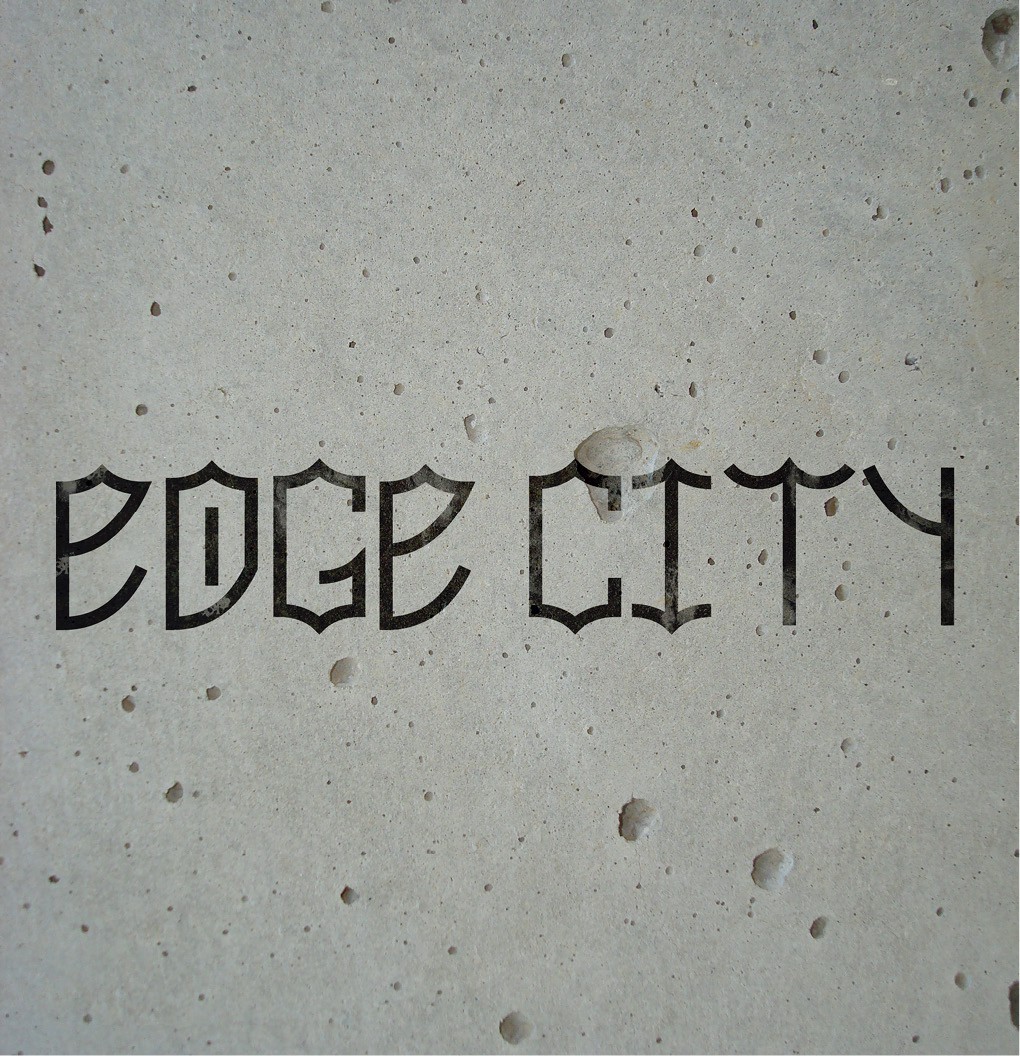Edge city
A reporter from The Guardian got into a car with his friend, a photographer, and drove counter clockwise around the non-tourist suburbs of Brazil’s largest city. The trip culminated in a book, fragments of which are published in BRICS Business Magazine. Having visited São Paolo’s suburbs, Justin McGuirk had a chance to act both as an anthropologist and urban developer. His story will help to fill various lacunae that one is inevitably confronted with when trying to understand one of the largest metropolises of the world from inside its business quarters.
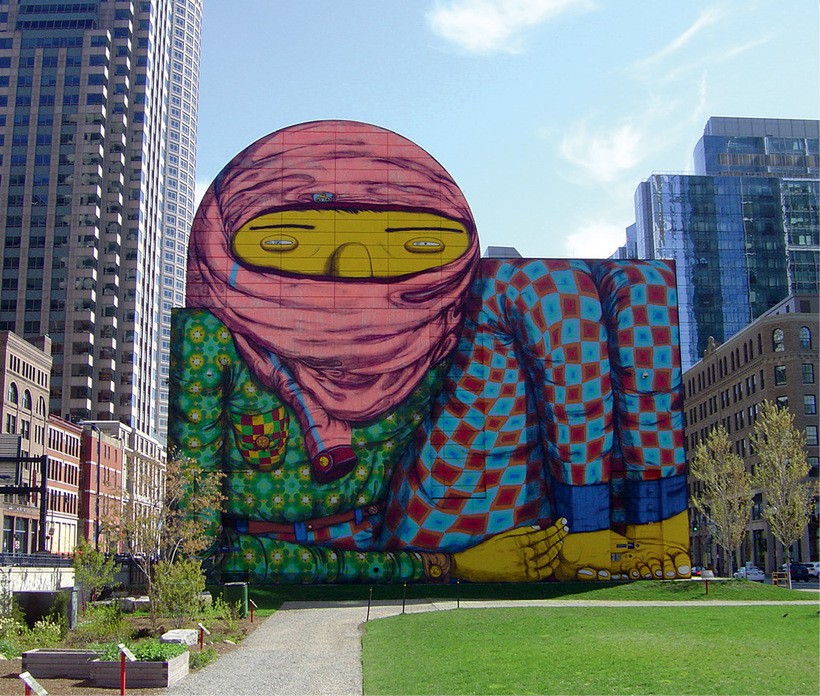
São Paulo, the largest city in South America, is an arsenal of statistics for the shock-and-awe urbanist. You might read that São Paulo is a megacity of 19 million people, and that it has grown 8,000% since 1900. Does that help us understand the city? Does it reveal some essential characteristic? In a limited sense, yes, but it also reinforces what we already know. Speed has always been this city’s raison d’être. In Tristes Tropiques, Claude Lévi-Strauss wrote of his time there in 1935: “The town is developing so fast that it is impossible to obtain a map of it.” In the middle of the 20th century, when the city was the engine of the “Brazilian Miracle”, a popular slogan proclaimed “São Paulo must not stop” – it was “the unstoppable city”.
Today, despite the staggering statistics, São Paulo is slowing down. The population is not growing anywhere near as fast as it used to, but all of that growth is happening in one zone: the periphery. São Paulo’s sprawling fringes reveal a city that is still very much in the making, still somehow raw. It is a place where the sacrifices that people make for access to the city are written into the landscape, into the fabric of their homes. Cities that grow this fast grow in an unconsolidated way, and so while the periphery is full of pathos it is also full of potential.
This is the record of a drive around the periphery of São Paulo. In London Orbital, Iain Sinclair spent months walking the M25, the city’s ring road, in an attempt to understand and embrace the sprawl. I have no such inclinations, and not just because the distances involved are even more perverse. São Paulo is not a city for walking, it’s a city of cars – six million of them. In that spirit, this is emphatically a drive, and as such it is an unapologetically blurred snapshot of a city taken from a moving vehicle, with occasional stops here and there to stretch our legs. But while I doff my cap to Sinclair, in one respect he had it easier: São Paulo has no M25. There are plans for a ring road, the Rodoanel Mario Covas, a 170km-long four-lane motorway. Indeed, one section of it opened in 2002, but the project stalled. Instead we’ll be patching together our own orbital, a spaghetti of roads named Ayrton Senna and Presidente Dutra, Nordestino and Imigrantes — some of these names contain clues as to how this city grew so corpulent.
Our route will take us anti-clockwise around the city, which offers the irresistible conceit that this is a journey backwards in time. In telling the story of social and informal housing in São Paulo, we will start with the conditions that face its most recent arrivals, and work back through other forms of housing that previous decades have offered. As we work backwards through those iterations, a fairly clear picture will emerge of the different strategies the government has taken to house São Paulo’s ever-growing population – and I include favelas in that “strategy”. Our trajectory will cut roughly from the present day back to a paragon of modernist social housing, and, even further, to a first world war-era workers village, all the way back to one of the missionary settlements that first purported to bring civilisation – or at least the word of God – to this part of Brazil in the 16th century. But this is not just a survey of housing, it is a portrait of a city that is best understood by its edge condition.
The official centre of the city is Praça da Sé, the old cathedral square. Like Trafalgar Square in London, it is the point from which all distances to the city are measured, point zero. Yet Sé has none of the potency of a symbolic central square, nor any of the usual bustle. Like nearby Praça da Republica, another once grand plaza, it is symptomatic of the decline of São Paulo’s historic centre. Meanwhile, a few blocks north, the Centro district is now the preserve of pimps and prostitutes, and neighbouring Santa Ifigenia has been renamed Cracolandia: Crack Land – an open market for crack dealers and addicts, and a no-go zone after dark. This triangle has been notoriously resistant to gentrification, but that resistance is buckling. With the municipality’s blessing, developers are demolishing entire blocks to realise their vision of Nova Luz, an upper middle-class quarter with a cultural centre designed by Herzog & de Meuron. As ever, speculation and land values take precedence over the current residents. The unlikely occupation of this central zone by the poor is coming to an end, and they will inevitably be decanted to the periphery.
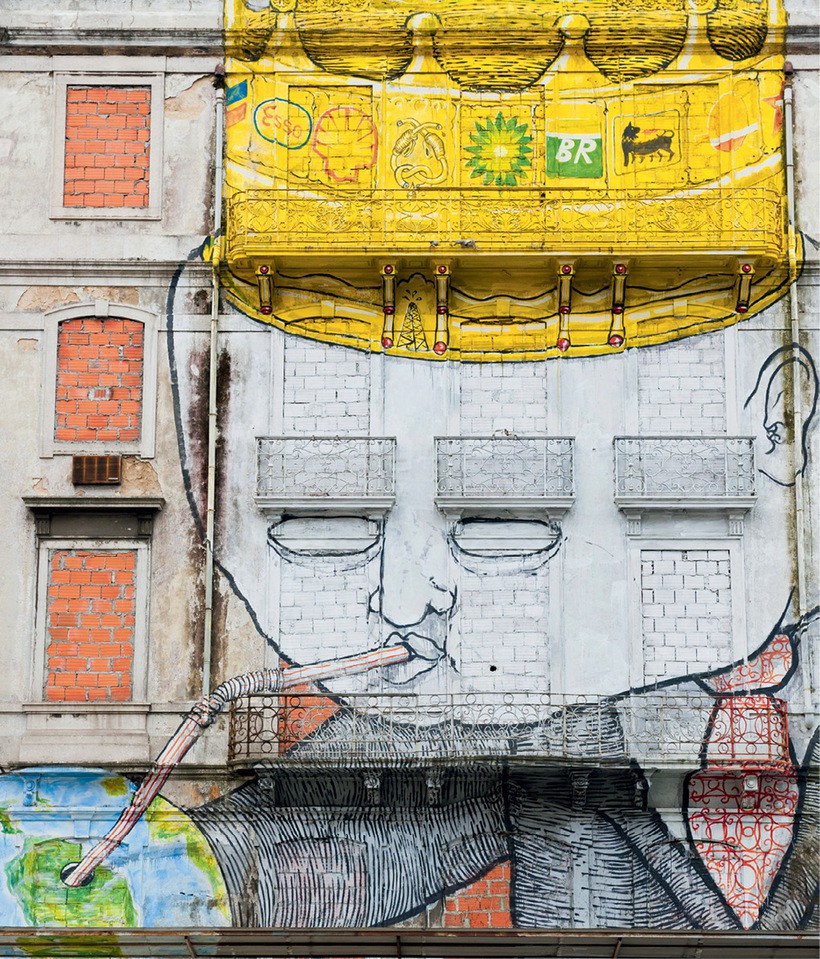
Elsewhere in the centre, tourist gui-des will draw your attention to Oscar Niemeyer’s meandering Edificio Copan, one of the largest residential buildings in the world. And a fine building it is too. But more telling than this landmark is a newer typology, the vertical slums that have blighted the centre in recent years. The São Vito tower was from the same era as the Copan but, far from representing the glamour of Brazilian modernism, it was recoded as a beacon of inner-city destitution. Its 27 storeys were occupied by squatters and its façade was a parchment of graffiti and broken windows until it was demolished in the summer of 2010. There are an estimated 40,000 abandoned buildings in São Paulo, and yet 2 million people live in favelas in the periphery. The municipal housing company Cohab is starting to buy some of these properties to turn them into housing, but so far none of the half-hearted attempts to revitalise the city centre has worked. The city has no real tradition of looking after its heritage. São Paulo has happily let once-vital areas go to seed as long as there is a new financial district being thrust upwards somewhere else. The “centre” has been shifting across the Monopoly board in a steady south-westerly direction – first to Avenida Paulista, then to Avenida Brigadeiro Faria Lima and, more recently, to Berrini. But the historic centre is in limbo, awaiting its gentrifying shock therapy. And the periphery? In the case of São Paulo the word periphery is almost a misnomer, as there is more periphery than anything else. There are no clear boundaries or perimeters. The periphery is a condition – it is the condition in which the majority of paulistanos live.
This has always been the product of tacit politics and economic exploitation. The first wave of the poor to settle in the periphery was actually not made up of rural migrants but was displaced from the city itself by the São Paulo equivalent of Haussmannisation. In the 1910s, the centre was redesigned with broad boulevards and gardens, which of course meant demolishing the crowded tenement quarters of the innercity poor, who were forced to the outer edge. Then in the 1940s, the city boundary shifted more dramatically. Rural landowners around São Paulo started subdividing their estates and selling plots cheaply – and illegally – to the poor. They gambled that once communities started to accumulate, the government would be compelled to provide basic services and transport routes. Faced with a housing crisis that it was failing to address, the government – the first of the military dictatorships – turned a blind eye to this unregulated expansion.
And of course the gamble paid off, because when those services arrived, the value of what remained of the landowners’ estates increased dramatically. There is a history, then, of the peripheral poor being used as pawns in a game of property speculation.
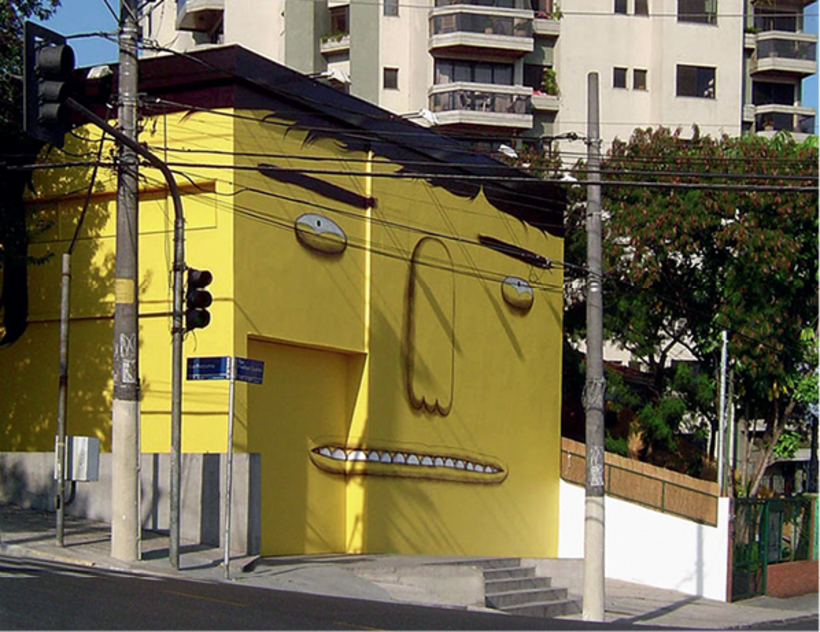 In subsequent decades there was less of the economic exploitation but the same degree of political blinkering. The expansion of the periphery took on a different scale in the 1970s with a wave of migration from the north-east leading to an explosion of favelas. Again it was a case of laissez-faire politics, with another military dictatorship deciding that the periphery was not in the municipality’s jurisdiction, but that the outlaw favelas would be tolerated so long as they looked after their own interests (which meant that the government didn’t have to).
In subsequent decades there was less of the economic exploitation but the same degree of political blinkering. The expansion of the periphery took on a different scale in the 1970s with a wave of migration from the north-east leading to an explosion of favelas. Again it was a case of laissez-faire politics, with another military dictatorship deciding that the periphery was not in the municipality’s jurisdiction, but that the outlaw favelas would be tolerated so long as they looked after their own interests (which meant that the government didn’t have to).
The São Paulo of popular imagination is conjured by photographs of a dense field of skyscrapers and tales of its helicopter-borne elite on the one hand, and by a creeping fringe of favelas on the other. But it would be overly simplistic to see the city’s composition in terms of a wealthy core surrounded by a ring of poverty. While new migrants tend to concentrate around the periphery, they are not alone. It is a place of extreme social contrasts. São Paulo followed a familiar course in the 1980s and 90s, with wealthy citizens fleeing the inner city for the suburban isolation of new gated communities. Alphaville – the sprawling enclave of manor houses and swimming pools on the city’s north-west edge – is the most notorious of these. We shall drive past it later, but such places are not the focus of this journey. Not only is there little to distinguish Alphaville from the suburbs of Phoenix, there is scant inspiration to be found in the capacity of e rich to look after themselves. By contrast, the tenacity of the poor in carving out a life in this brutal city is constant source of amazement.
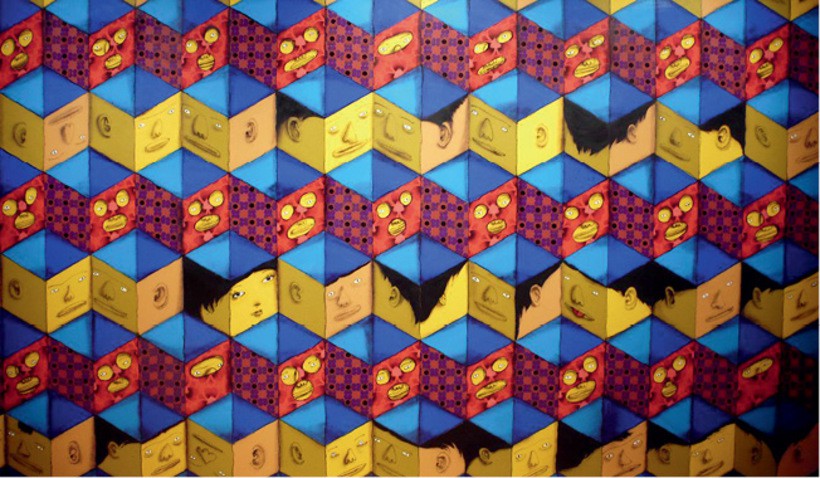 2. SELF-HELP:
SÃO MATEUS
2. SELF-HELP:
SÃO MATEUS
We’ve been following a lorry with “So Jesus Salva” inscribed across the wheel guards: Only Jesus can save you. Cutting through a forest, we soon find ourselves in São Mateus. This is a diverse streetscape that feels only half formed. We slow to a crawl as there’s a pack of wild dogs in the road and one of them is determined to mount another whether we like it or not. There are some social-housing blocks, a few roads’ worth of self-built housing and a small favela just off the road, next to a stream. As we get out and start pulling out cameras, a man approaches us shouting something. He’s saying he wants to make a formal complaint about the conditions there. The government is absent, he says. Before we know it, he’s leading us down a muddy path towards his shack.
Inside, the man leaves us in the hands of his wife, a woman in her late 20s perhaps, with young skin but an old face, and a scarf over her hair. She doesn’t work but looks after the house and their two kids. And no doubt she is wondering why there are suddenly three strangers standing in her kitchen but is too shy not to go along with the situation. It’s not the first time people will accept us into their homes – their openness is in marked contrast to the closedness of so much of the São Paulo fabric.
She explains that they bought the land – or, rather, the space – off their neighbour for 2,000 reais ($1,000). That purchase will not have legal standing of course, because it wasn’t technically their neighbour’s either. Ten days ago, she continues, during a heavy rain, the stream broke its banks and the floor of their house was submerged in sewage-tainted water. There is no sign of that drama now. The place is spotless, and surprisingly well appointed considering the precariousness of the structure itself, which looks like it could blow away. They have a fridge, a TV and a cheap plastic washing machine. The blender has a crocheted cover on it.
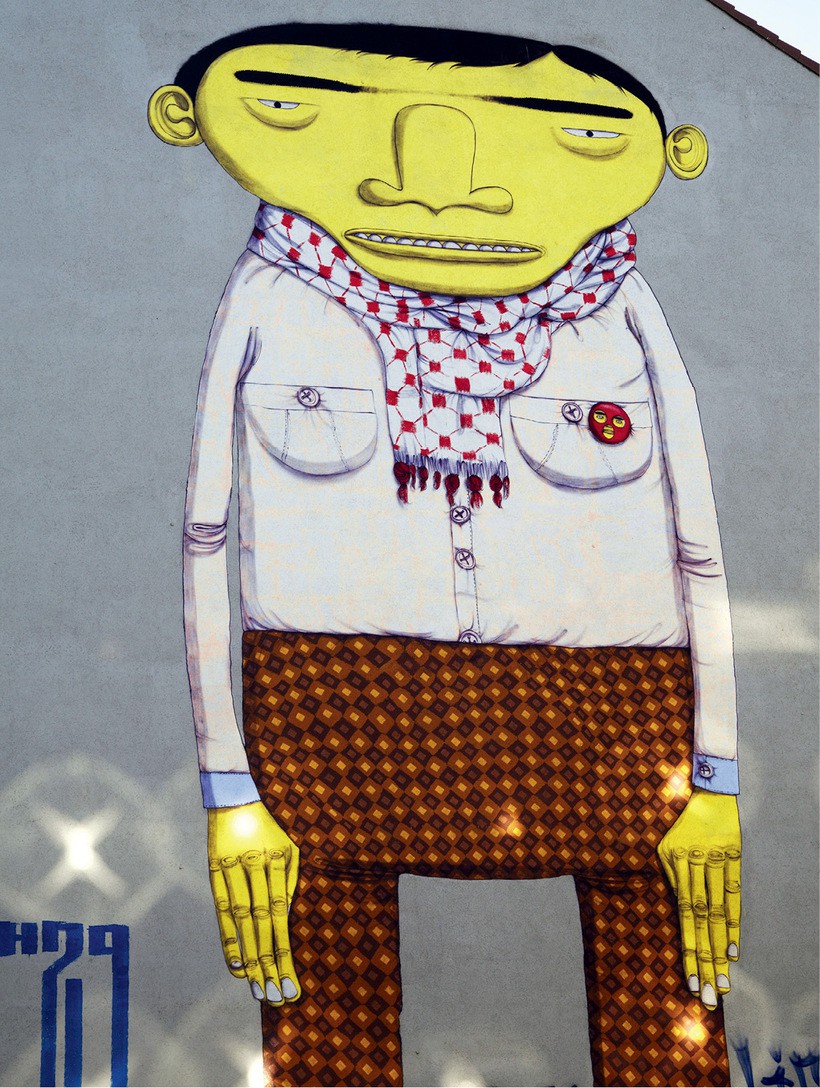
The houses here are all assembled from cardboard, sheets of plastic laminate and corrugated iron. This is just a seedling favela, a fresh settlement by new arrivals. It’s an illegal occupation of the land, and a tentative claim to it. These houses will last four or five years, and at that point, if they haven’t been moved away, the residents will formalise their claim with bricks and mortar. This cluster has only been here two years. There’s no running water and the electricity is siphoned off a nearby pylon. Under foot, sewage pipes poke out directly over the stream. Favelas are most often founded next to rivers or creaks for precisely this reason. Some of the pipes happen to be nestling in wild mint, as if to mitigate the aroma.
The Clã da Parede Podre blog mocks working-class paulistanos who post pictures of themselves in aspirational poses — in the swimming pool or with a flashy car — only betrayed by the stained walls behind them
Nascent favelas such as this one are rarer than they used to be. With so many large, entrenched favelas across the city, it is much easier to join the edge of an established community than it is to strike out on new territory as these people have done. These settlements tend to grow fastest when there is a building boom in full swing. A migrant from the north-east will come and get a labouring job, then his cousin will come down and move in, before meeting a girl and building an extension for themselves. It’s the natural order of things.
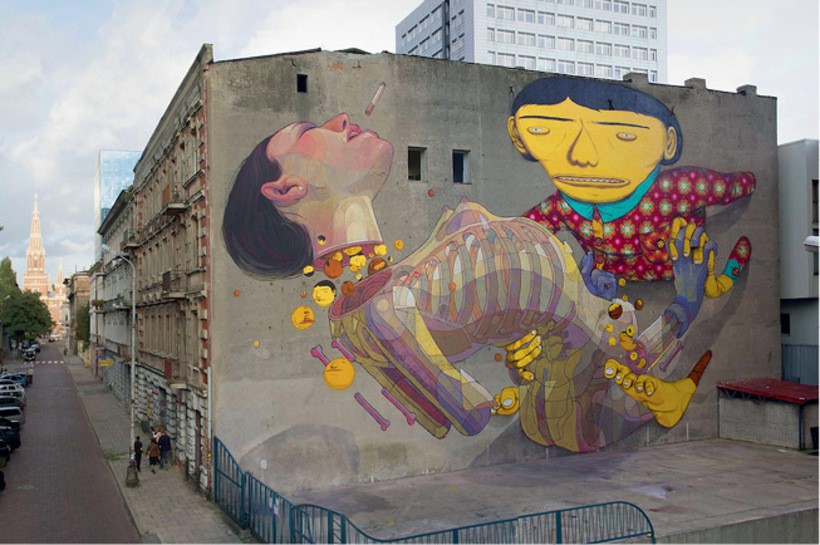 While the favela may be the most notorious form of housing that the poor will build for them-selves, there are more institutional forms. In fact, we came across this favela by chance. The real reason for visiting São Mateus was to see another settlement down the road. Here, residents were granted permission from the government to build themselves real houses, following a standardised design handed out by the department f housing. This programme is known as mutirão, a Portuguese word taken from the indigenous Guarani rm for working together towards a common goal.
While the favela may be the most notorious form of housing that the poor will build for them-selves, there are more institutional forms. In fact, we came across this favela by chance. The real reason for visiting São Mateus was to see another settlement down the road. Here, residents were granted permission from the government to build themselves real houses, following a standardised design handed out by the department f housing. This programme is known as mutirão, a Portuguese word taken from the indigenous Guarani rm for working together towards a common goal.
The mutirão housing programme was launched in 1987 as a cost-effective way of tackling the housing deficit. Local community organisations could claim grants for building materials, and then pool their labour to build the houses themselves. It didn’t come with legal tenure of the land but it was a productive way of resourcing community self-organisation. In São Mateus, more than 500 families built their own homes this way. Arranged in neat terraces along straight, orderly streets, these two-storey houses appear to self-consciously shun the disorder of the favela. But they are not without their idiosyncrasies. It soon becomes apparent that the original houses lie somewhere behind newer extensions that thrust the frontage right up to the pavement. In most cases these extensions consist of forecourts for parking with an extra room and balcony above. The owners of these houses may be poor, but in one respect they emulate their wealthier paulistano counterparts. Almost every house meets the street with a large, floor-to-ceiling gate. The decorative panache behind each gate varies – some go in for pink paint and faux-marble tiles while others opt for bare brick and concrete – but the gate is universal.
On the street we meet a middle-aged woman, Francesca, locking up her gate. She recalls trying to move here 20 years ago almost as if it were a battle. “It was a struggle. We attended all the meetings and seminars, all of those things, until the day came when we occupied the land. We arrived one night, and the day after we achieved the victory, thanks to God.” It took her and her husband five or six years to build the house and make it habitable. They would come on the weekends, as they worked during the week, and lay bricks. For a long time they had no doors or windows. There was no sewerage, so they dug a latrine in the garden. The roads weren’t asphalted. Besides the permission to build and a small grant for materials, there was no other government support. Gradually, basic services such as water and electricity were provided, but still they have no legal documents for the house. We ask how much the houses here are worth now. Francesca thinks about 25,000 reais ($12,000). “But I won’t sell my house. I fought for it, and it was such a struggle. I will never sell it.”
Introduced in the 1980s, the mutirão housing scheme was a short-lived pheno-menon. It had only been running a few years when the incoming government of President Collor scrapped it in 1990. While local community housing initiatives still exist, the government-sponsored version arguably never really worked anyway. It was overly bureaucratic, requiring participants to work on the building a certain number of hours a week to qualify, and as we saw with Francesca, it was a huge drain on families – one that did not even result in legal ownership. It was much easier and cheaper, in the end, to have a local mason build you a small house in a favela. Having briefly romanticised the idea of self-building, the government quickly resumed its laissez-faire ways.
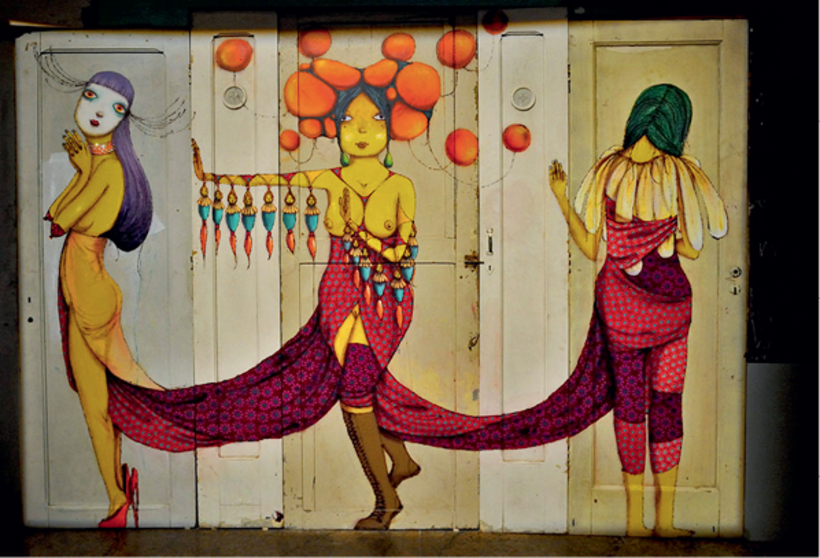 The streetscape here in São Mateus is eerily empty. There are no shops, no sign of daytime activity. Just the intense morning light and a silence that leaves us wondering how secure we feel outside of the car. Francesca’s street sits in a disjointed, patchwork landscape. This still has the tangible feel of an area that was once countryside before succumbing to a series of randomly sited developments that now exist in an awkward relationship with each other. What is interesting about it is that within a few hundred metres you have three utterly different approaches to the housing problem: the favela, the mutirão and social housing blocks. You would expect the social housing to be the best of these options, but that is far from obvious from where we are standing. Behind walls topped with razor wire, it certainly appears to be more secure, but then these hulking blocks also have the air of prisons. They are raised up on piloti, that device beloved of tropical modernism, but in every other respect their design and construction is crude in the extreme. Their sad effect is no doubt partly a consequence of their colour, the concrete shame-facedly showing through the sallow, mildewed pastels. Though they will have been built in the early 1990s, they look much older. It’s the climate that does it. Lévi-Strauss noted the rotting effect of this heat and humidity. He dwells on it in Tristes Tropiques, concluding that towns in the New World “pass from freshness to decay without ever being simply old”.
The streetscape here in São Mateus is eerily empty. There are no shops, no sign of daytime activity. Just the intense morning light and a silence that leaves us wondering how secure we feel outside of the car. Francesca’s street sits in a disjointed, patchwork landscape. This still has the tangible feel of an area that was once countryside before succumbing to a series of randomly sited developments that now exist in an awkward relationship with each other. What is interesting about it is that within a few hundred metres you have three utterly different approaches to the housing problem: the favela, the mutirão and social housing blocks. You would expect the social housing to be the best of these options, but that is far from obvious from where we are standing. Behind walls topped with razor wire, it certainly appears to be more secure, but then these hulking blocks also have the air of prisons. They are raised up on piloti, that device beloved of tropical modernism, but in every other respect their design and construction is crude in the extreme. Their sad effect is no doubt partly a consequence of their colour, the concrete shame-facedly showing through the sallow, mildewed pastels. Though they will have been built in the early 1990s, they look much older. It’s the climate that does it. Lévi-Strauss noted the rotting effect of this heat and humidity. He dwells on it in Tristes Tropiques, concluding that towns in the New World “pass from freshness to decay without ever being simply old”.
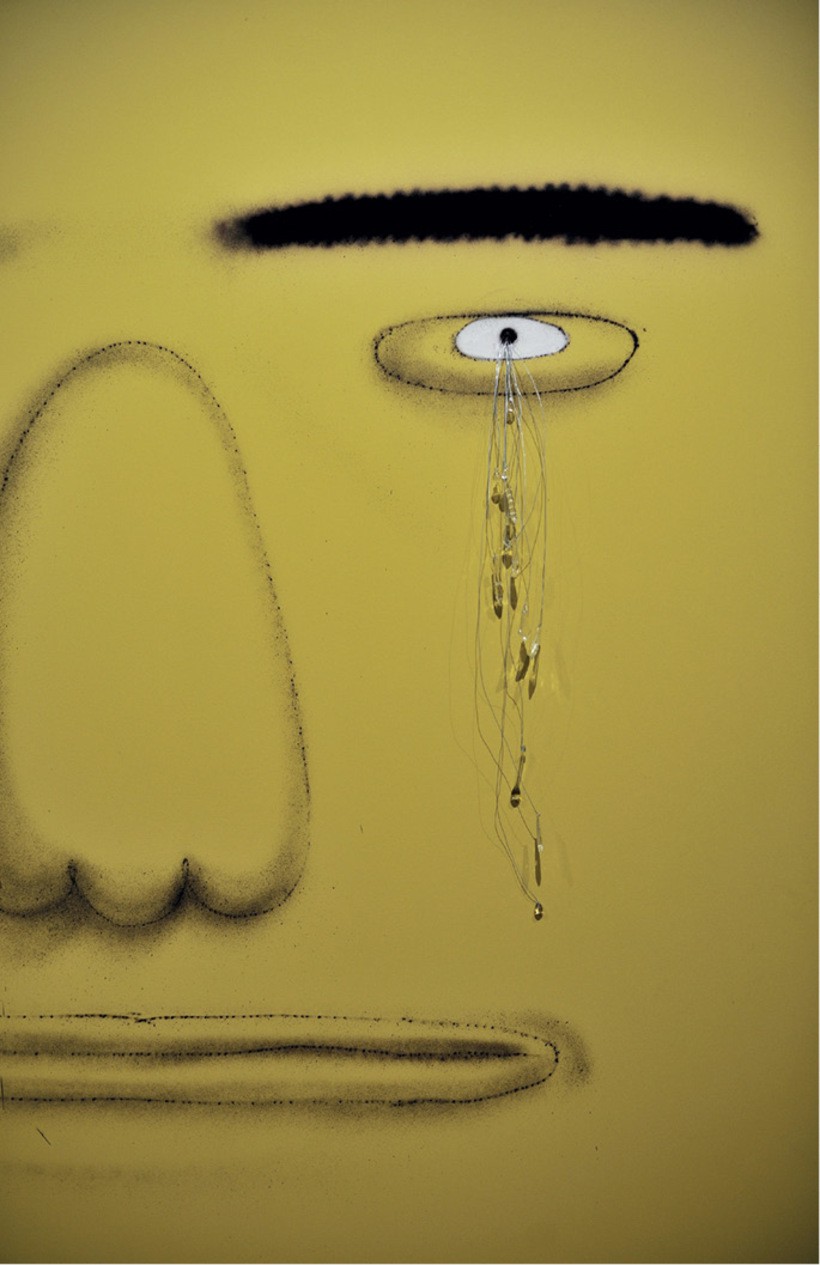
It’s not uncommon to find grand old houses standing empty near favelas, like colonial fortresses abandoned in the face of superior numbers
Rotting concrete is the backdrop to so many lives, as one blogger has observed. The Clã da Parede Podre, or “rotten wall clan”, blog mocks working-class paulistanos who post pictures of themselves in aspirational poses – in the swimming pool or with a flashy car – only betrayed by the stained walls behind them. It’s a nasty piece of social snobbery. Anyway, it makes you realise what a coat of paint can do. One of the social-housing developments here is much newer, which is obvious not just from the slightly more complex design (with corner balconies) but the freshness of its colour. The building is almost exactly the hue of the red earth around it, as if it was formed from the very clay on which it sits. The redness of the earth here is a constant surprise to my European eyes, and while one is hardly ever aware of it in the city centre, it is abundantly exposed on the rawer edges where the city is still being formed. This redness is in some ways the very essence of Brazil. The country was named after the trees that the Portuguese called brasa, or mbers”, for the reddish glow of its wood. It was the dye extracted from that wood, and thus one might say edness itself, that made Brazil such a lucrative colony in the 16th century.
But São Mateus is not the best place to consider social housing. We are heading north, to Zezinho Magalhães and a para-digmatic setpiece from the 1960s. Designed by João Vilanova Artigas and Paulo Mendes da Rocha – Brazil’s most revered architect after Oscar Niemeyer – it is a relic from a time when social housing was still an idealistic project. Compared with the cheerless examples we’ve just seen, I’m curious to discover whether it retains any of its utopian optimism.
Exiting São Mateus along one of its high streets, you can’t help but notice the conspicuous number of love motels. Charging by the hour, they’re particularly common in poor areas such as this, where apartments have too many occupants for even the hope of any privacy. One of the motels is offering an Executive Lunch promotion – the room comes with a plate of feijoada, Brazil’s signature black bean stew. That’s what you call maximising your 40-minute lunch break.
Turning on to Avenida Itaquera, we set into a steady cruise. Not for the first time today we pass an old mansion house that is perversely out of context. Did it once sit amid a fazenda, or coffee plantation, the likes of which first produced São Paulo’s wealth in the 19th century? Even 30 years ago it would have stood in open countryside, but the city has swallowed it. It’s not uncommon to find grand old houses standing empty near favelas, like colonial fortresses abandoned in the face of superior numbers. Though I’ve heard of some who keep them for occasional parties at which they and their friends revel in nostalgia for more idyllic times.
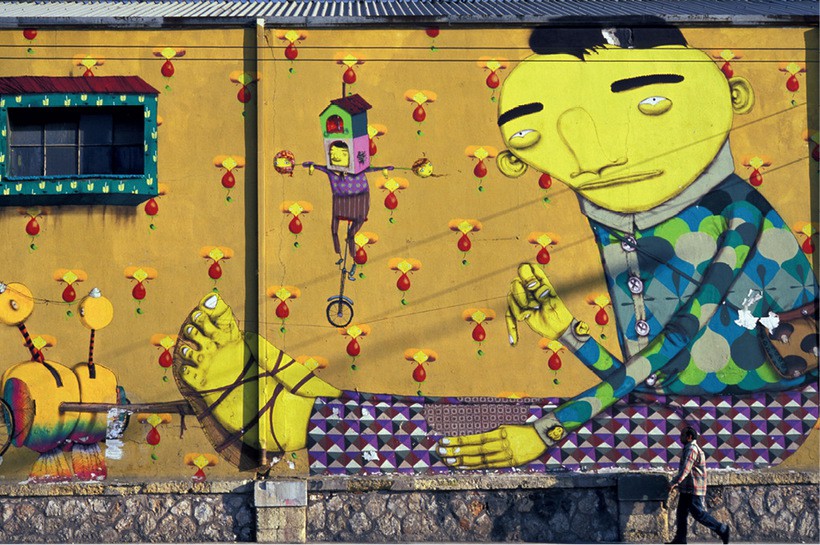
We pass a neon sign that appears to be attached to a bingo hall: Jesus Cristo é o Senhor. Jesus Christ is the Lord. This is the local outpost of the Universal Church of the Kingdom of God, the evangelical empire of its billionaire founder, Bishop Edir Macedo. There are 4,500 such churches across Brazil, with millions of followers around the world (and 20 branches in the UK). Made in the mould of an American televangelist, the private-jet-flying Macedo has built a global empire on donations from the poor.
A lorry cuts in front of us with “Jesus is the fountain of life” splashed across its wheel guards. And then, suddenly, we’re crawling along in traffic. It’s still mid morning, but this isn’t a commuter jam. In the outskirts of São Paulo, rush hour happens much earlier than in the centre, between 6am and 7am. That’s simply because from here, with the traffic, you need to allow about two hours to get to work in the centre. It’s no wonder the road is lined with car dealerships and mechanic workshops.
Next to us an old VW camper van is spewing plumes of exhaust, forcing us to wind up the windows. We just need to get past the next traffic light, because we’ve discovered that we’ve gone too far east. A short detour and we’re heading along Avenida Nordestina, back towards Guarulhos airport. Nordestina, or the north-eastern, is a reference to the main source of São Paulo’s immigrant population. Even Lula was once a penniless migrant from the north-east, a fact that has no doubt contributed to his immense popularity with Brazil’s sub-proletariat. Passing a billboard advertising the local electoral campaigns of two politicians, what is most noteworthy is how their names have been turned into logos. One of them is contained in a gold ieroglyphic-style cartouche with a starburst glint. The man’s wearing a suit and tie but his logo is worthy of gangster hip-hop album cover.
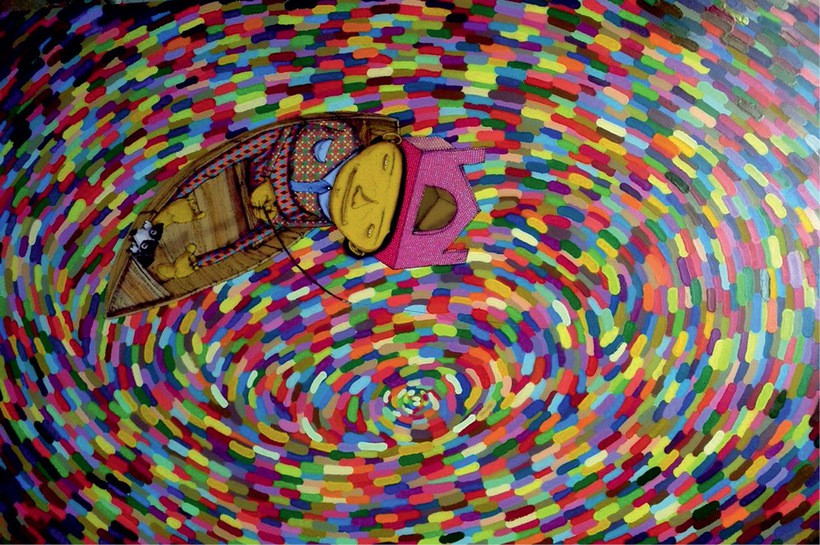
Ironically, given their often reactionary politics, in the late 1960s and 70s the military regimes of not just Brazil but Argentina, were still willing to pump huge sums of money into housing projects by the most respected architects
3. MODERNISM: ZEZINHO MAGALHÃES
Gunning on to the Ayrton Senna highway, appropriately, we finally clock 100kph – only we’re going in the wrong direction. The city is to our right, and it should be on our left for the entire circuit, which means we’re heading south instead of north. We pull off at the next exit and 10 minutes later we’re back on track and passing Guarulhos international airport. By the roadside are dozens of bare, rusting billboards, and though this form of advertising was banned in São Paulo in 2006, it isn’t out here in Guarulhos. Correction: one or two billboards are taken. There’s a Mercedes ad. There’s an Audi. Cars, of course – luxury cars. Luxury is so incongruous on its own like this, it needs the plenitude of other advertising to feel at home.
Pulling into the complex of Zezinho Magalhães, its vast scale is not obvious at first, but there are three sectors and a total of 72 housing blocks. And that’s only half of what was planned. Commissioned by the military dictatorship in 1967, it was originally designed to cover 130 hectares and house 50,000 people. Zezinho was to be an exemplar of how to provide social housing on a mass scale. Vilanova Artigas, its lead architect, used it as an experiment in prefabricated construction in the hope of achieving an industrial efficiency. Mendes da Rocha, Artigas’ assistant on the project, recalls that, “The goal … was to reach a level of excellence that would demonstrate that quality of housing need not correspond to the economic standards of a given social class but to the technical knowledge of the historical moment, offering rational, honest and accessible construction to everyone.”
This kind of idealistic rhetoric, still prevalent in the 1960s, has hardly been heard since. The idea that somehow technology would be a great social leveller never quite transpired. But the main reason why governments and architects alike drifted away from such noble stances on social housing was the expense. Ironically, given their often reactionary politics, in the late 1960s and 70s the military regimes of not just Brazil but Argentina, were still willing to pump huge sums of money into housing projects by the most respected architects. At this stage, high modernism still had political backing, even if it was from dictatorships to whom the architects themselves were antithetical. But as it became clearer that such exemplar projects were failing to keep pace with population growth and were thus ineffectual at reducing the housing deficit, the political will sapped. It would be fair to say that from the late 1970s onwards, what was an idealistic and centralised strategy became a pragmatic and piecemeal one resulting in the kind of forlorn housing blocks we saw in São Mateus.
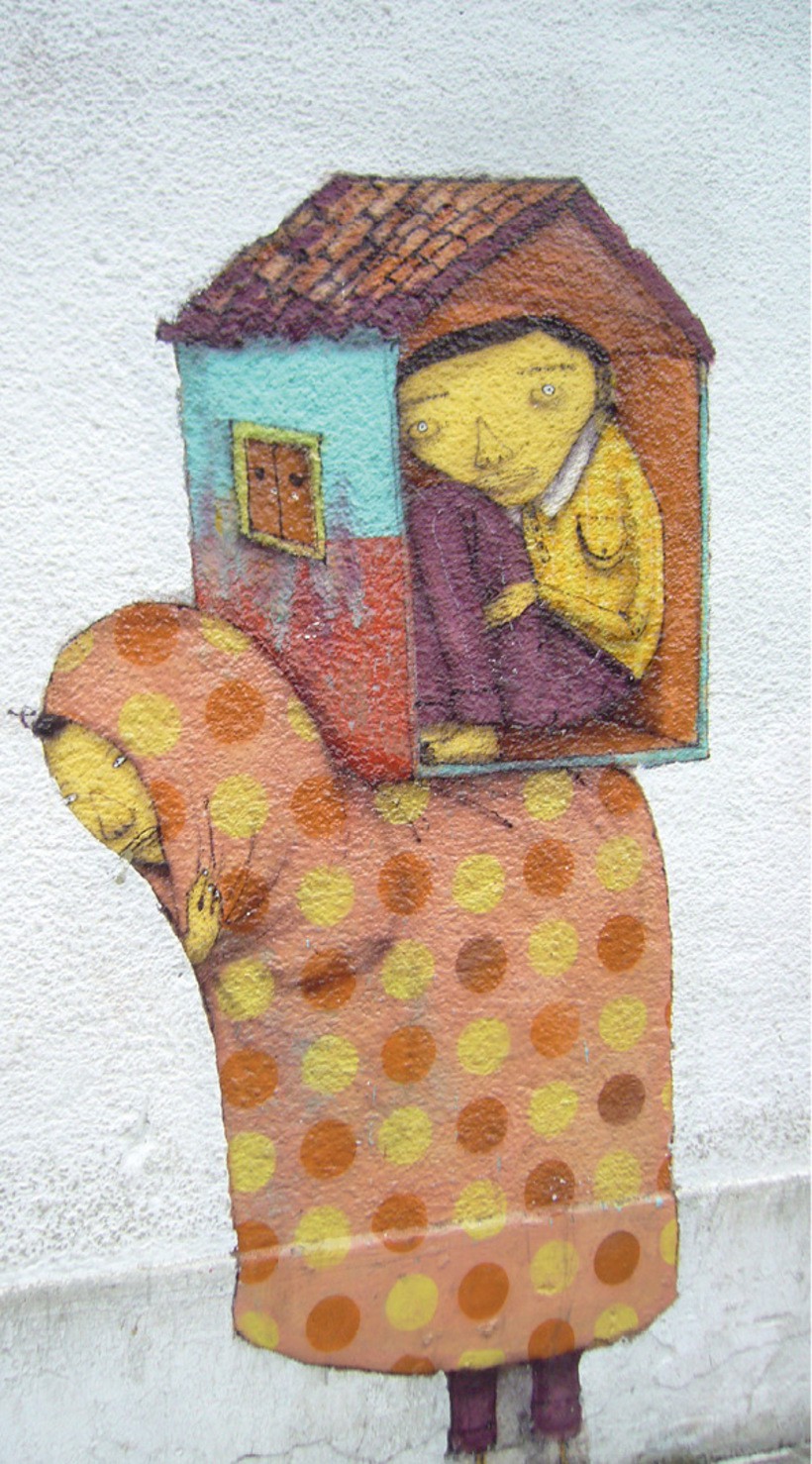 Just outside Zezinho is a lively street market that looks like a promising place to make a pit stop. We have a standing breakfast of pastels, deep-fried meat pastries, and cups of freshly pressed cane juice, before setting off into the complex on foot. The place is remarkably well kept, with tended gardens and fresh coats of mustard paint. Perhaps some of that attention stems from the fact that this is such an obvious period piece, straight out of the CIAM (Congrès internationaux d’architecture moderne) textbook – it was orthodox even for its time. The blocks are arranged in strict ranks, long and low. Each one is a mere three storeys, but raised up on piloti to create an open ground level for parking. While Latin American modernists adored these piloti, so often they produced gloomy, menacing undercrofts. Here, because the buildings are narrow and not too high, and because of the green landscaping, the place is still bright and comfortable. By Brazilian working-class standards it feels rather affluent, and I have the weird sense of being in an American condominium.
Just outside Zezinho is a lively street market that looks like a promising place to make a pit stop. We have a standing breakfast of pastels, deep-fried meat pastries, and cups of freshly pressed cane juice, before setting off into the complex on foot. The place is remarkably well kept, with tended gardens and fresh coats of mustard paint. Perhaps some of that attention stems from the fact that this is such an obvious period piece, straight out of the CIAM (Congrès internationaux d’architecture moderne) textbook – it was orthodox even for its time. The blocks are arranged in strict ranks, long and low. Each one is a mere three storeys, but raised up on piloti to create an open ground level for parking. While Latin American modernists adored these piloti, so often they produced gloomy, menacing undercrofts. Here, because the buildings are narrow and not too high, and because of the green landscaping, the place is still bright and comfortable. By Brazilian working-class standards it feels rather affluent, and I have the weird sense of being in an American condominium.
Climbing up a random stairwell, we find ourselves on an access deck that feels rather like someone’s veranda. A number of the apartment doors have been personalised with crazy paving or tiles imitating stone or brick. It seems almost any store-bought surface is preferable to concrete. While these embellishments may jar with our purist sensibilities, such home improvements are a healthy expression of a commitment to a place.
Standing outside his front door in baggy jeans and a white vest is Sergio, smoking a cigarette like a man in a Levi’s advert. In his late 50s now, he moved here 25 years ago when he was still working at the local Ford factory. It’s extremely safe, he says, a good place to bring up kids. About 60% of the original tenants still live here, but there’s also been a certain amount of gentrification. When the middle classes aspire to live in housing built for the poor, it is at least a sign that it has been well designed. On the other hand, you wouldn’t strictly call Zezinho social housing any more, with rents at 700 reais ($350) a month – the Brazilian minimum wage is 545 reais a month. The market price of one of these apartments is R$130,000 ($65,000).
Sergio shows us around his apartment. The ceilings are on the low side but because of the narrow blocks, the apartments all have a dual aspect and healthy cross ventilation. The real boon of Artigas’ design, however, is that there are no structural walls within the apartments, just gypsum partitions so that residents can reconfigure the interior as they like. Sergio raps his knuckles against a new, hollow wall. He expanded the kitchen because when they have guests that’s where everyone hangs out. He starts going into energetic detail, not at all fazed by having three strangers in his home but, rather, proudly discussing room dimensions and the way that locals here look out for each other. It’s hard to imagine people satisfying our curiosity so readily in a wealthy neighbourhood. In fact, I can’t see a group of Brazilian architects or anthropologists sweet-talking their way into a council flat in London and getting this kind of cooperation.
Somehow in Brazil, the fact that we even show an interest is flattering.
I don’t know whether the standard of this block is maintained across the whole of the Zezinho complex, but the quality of life here and the degree of communal pride certainly seem to validate Artigas’ design in particular and the idea of centralised housing in general. I would rather live here than anywhere we’ve seen so far. The mutirão houses are much bigger than these flats, and they have the personal investment and satisfaction that comes with building your own house – but imagine, even after such a struggle, not having the security of legal ownership.
In any event, the tota-
litarian approach ofcentra-lised social housing is not just outmoded politically but urbanistically. The provision of housing is no longer even the central issue. The urban discourse has shifted its attention from the object to the network, if you will. The favelas are no longer an embarrassment to be cut out of the city like a cancer and replaced by neat ranks of piloti-raised blocks. They are a given, and the question is how to incorporate them. Infrastructure and connectivity are the new means of enfranchising communities.
Zezinho-style grands projets may have been consigned to history, but they still have their advocates. Mendes da Rocha himself remains a belie-
ver. He is a socialist – the late Artigas, it should be said, was a communist – and so one would expect him to uphold the urban ideal of collective living, but he goes even further.
He still adheres to dogma-tic modernist principles, both in aesthetics and
industrialised construc-tion methods – indeed, his design for the Olympic village for
the 2016 Rio games is in the same mould
as Zezinho. He even thinks that indivi-
dual houses are unjustifiable. Hypocriti-cally, he did design himself a eautiful house, which he no longer lives in. Roberto once asked him about it and the 80-year-old replied, hat was the biggest mistake of my career.”
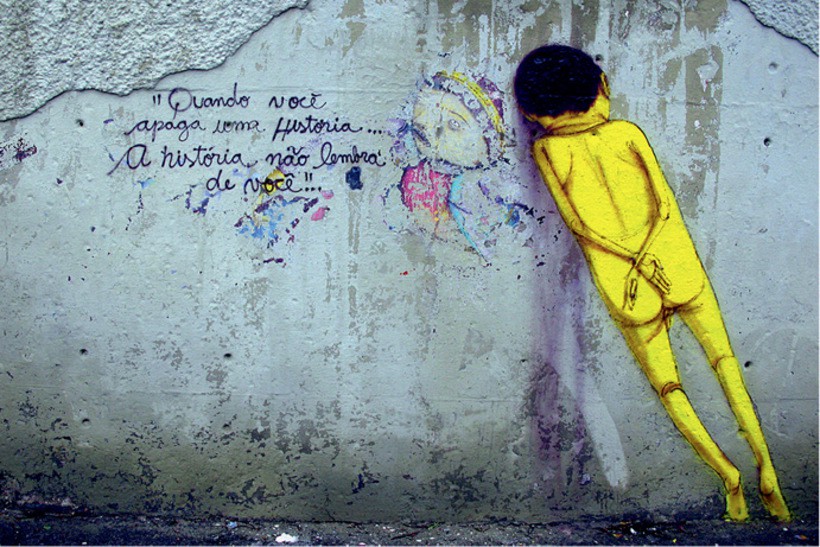
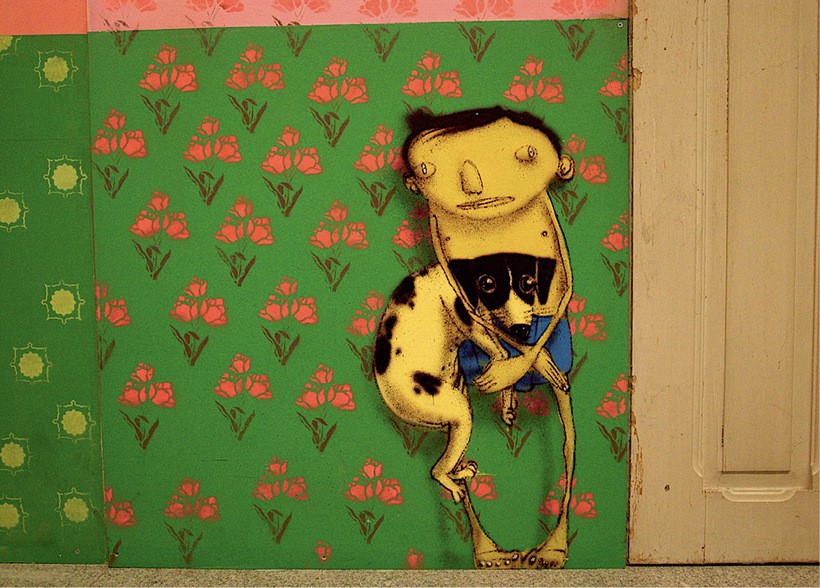
The favelas are no longer an embarrassment to be cut out of the city like a cancer and replaced by neat ranks of piloti-raised blocks
Justin McGuirk is Director of Strelka Press, winner of the Venice Architectural Biennale’s Golden Lion Award and columnist for The Guardian.
Illustrations by
Os Gêmeos




